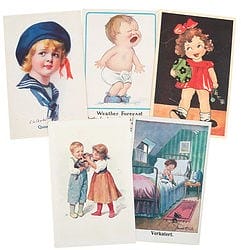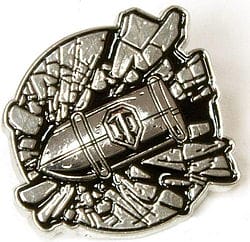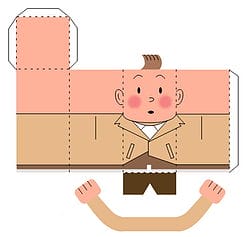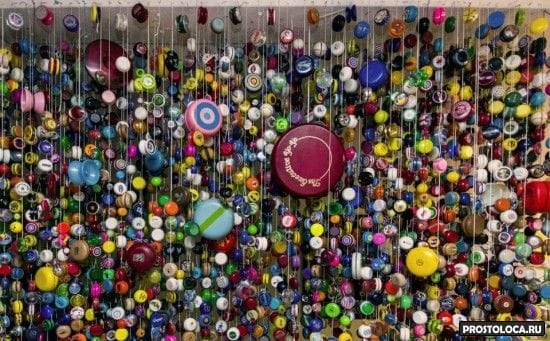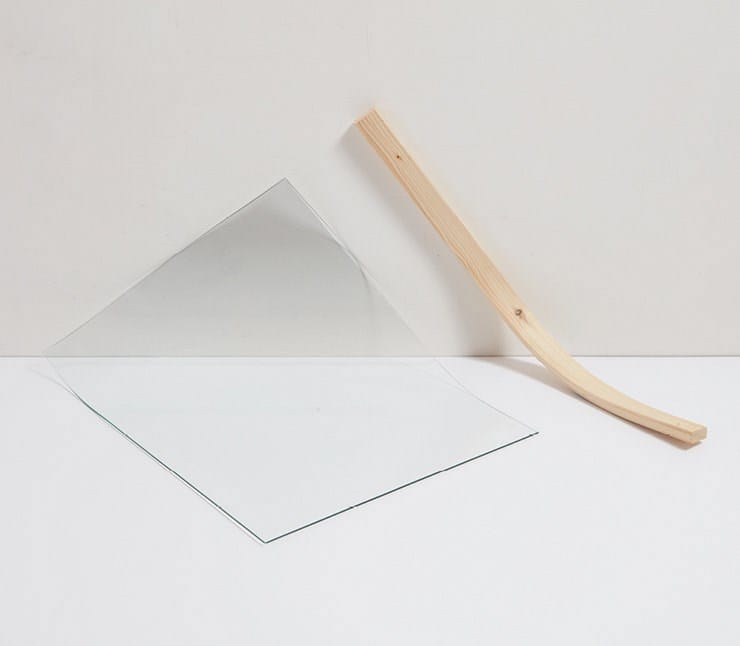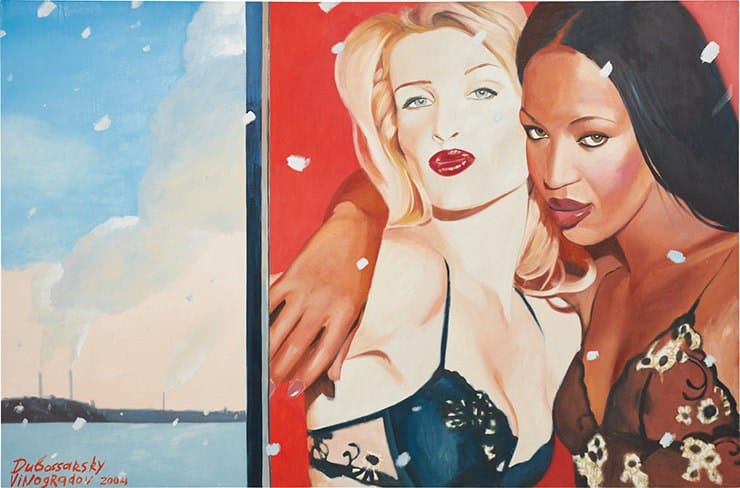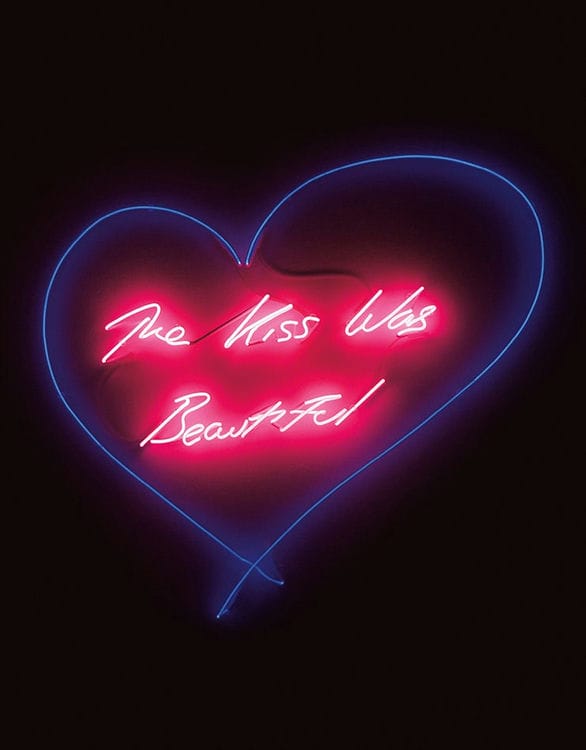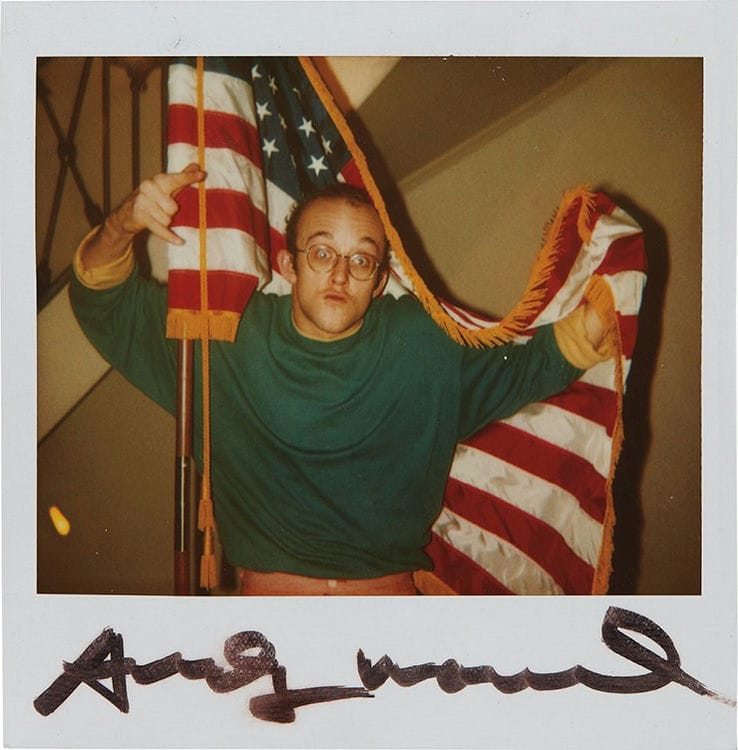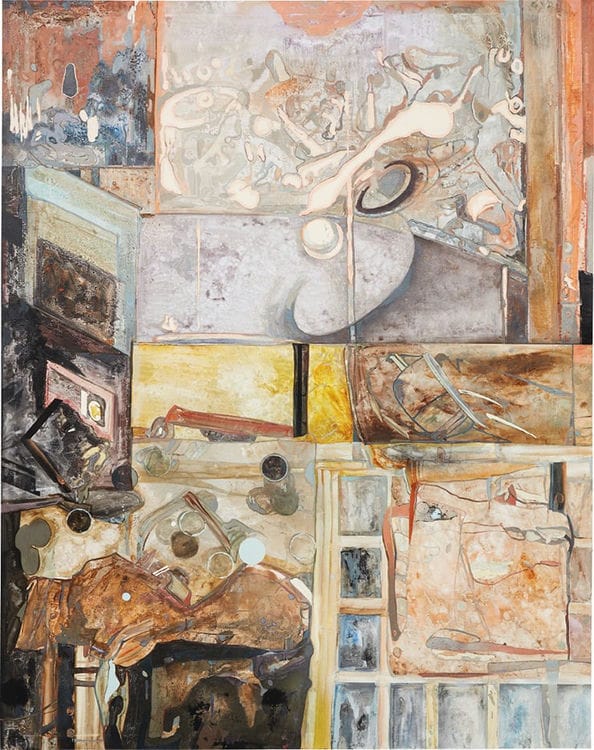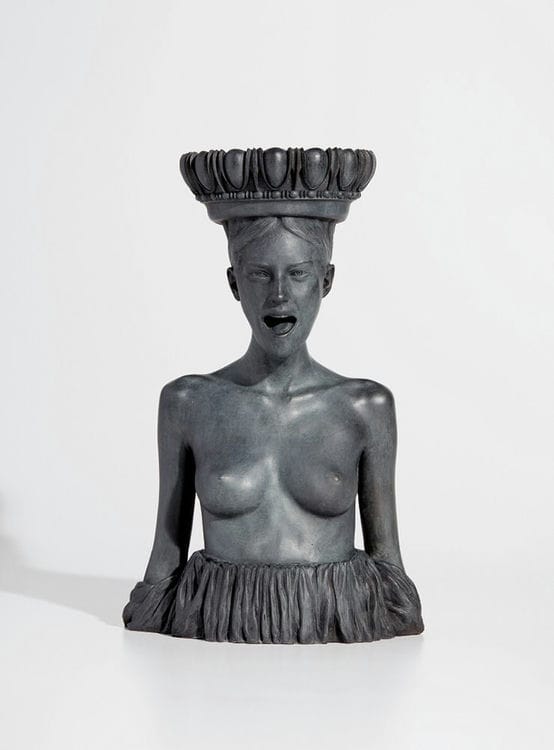Where to begin?
First of all, give yourself the installation that you will not be able to collect all the coins of all times and peoples.
Let us recall the origins of philately close to numismatics. If in the early years of the issue of postage stamps there were a large number of collectors who firmly decided that they would collect all the postage miniatures issued in the world, then at present it is unrealistic to do this. Considering the age of the first coins, such a number has not passed with numismatics since ancient times. Therefore, as a first step, you need to accurately determine for yourself: which specific coins your future collection will consist of. Even if later this choice will be repeatedly revised
Where to store the selected coins?
Studying the history of the Russian state, let us note the very fact of collecting postage stamps by Emperor Alexander III. However, his collection consisted of a set of boxes, where the tied packs of postage miniatures were kept in columns. The numismatic collection of a novice collector sometimes resembles this royal collection: selected from circulation, or even purchased coins, dangle on boxes or are stacked in a heap on the far shelf. And okay, if ordinary everyday coins are chosen as the basis. But if copies of PROOF quality made of precious metals are impulsively bought, careless storage will lead to inevitable damage to the collection material.
What will be the storage location?
It is up to the collector to decide. Usually the first step is some type of coin album. Coins receive a certain degree of protection, and their general collection becomes orderly. The most valuable specimens are recommended to be kept in coin capsules initially. We decided on the coins and the storage location. Time to ask:
What will my collection look like?
Having distributed coins in the cells of albums or in capsules, you are not far from storing them in a pile. It’s just that now the former heap is distributed in space. From this she did not become a collection. Any worthy collection is a real museum exposition illustrating some important fact or period. Therefore, the process of systematization is inevitable. Here, the rough work has often already been done for you by the manufacturers of colorful glossy albums, each nest of which has an explanatory inscription, and the margins of the sheet are artistically decorated, reflecting the general idea that connects all the presented coins.
A serious collection never uses the principle “The more coins, the better!” Sometimes two correctly selected coins can reveal the topic more fully than a whole album sheet with a chaotic arrangement of randomly acquired copies.
Who am I now: a numismatist or a collector?
Having got ten unusual coins, it is extremely imprudent to say about yourself “I am a numismatist!” Looking into the old dictionaries, one can see that the notion “numismatist” was used to describe the collector of coins and medals (this is not surprising, since both payment signs and state awards were traditionally issued by mints). In modern language, the term “numismatist” has a broader meaning. This is a specialist in numismatics – an auxiliary historical discipline that studies the history of coinage and money circulation.
In addition to the fact of owning a certain number of coins, a numismatist is able not only to list the copies he has, but to tell the story of the appearance of each of them, including both technological processes and the situation of monetary circulation at that time, which paints a detailed picture of why this particular year the coin turned out just like that. This approach separates numismatists from numismatic collectors. Here specialized literature comes to the aid of a numismatist. However, it is not always worth digging into directories and reference books right off the bat. The modern communication environment involves a large number of forums where coins from various periods of different countries of the world are discussed. It is in the process of reading the discussions that the features of a particular coin, its rare varieties and connections with other coins of a given topic or period are easily noticed.
After going through the evolution from the accumulator of the copies you like to the connoisseur of the chosen topic, from a pile of coins you create your own miniature museum, the tour of which will be interesting both for your friends who have dropped in for a visit, and for forum visitors who are interested in the same topic – the same newcomers as you were at the very beginning of the journey.
First advice
You need to start small and simple in order to gain experience and knowledge. You can’t buy anything on the numismatic market with your eyes closed. Start with relatively “easy” and “understandable” coins from the times of the Russian Empire or the USSR.
Second tip
Beware of counterfeits. There are many of them on the numismatic market. And the more expensive a thing, the more likely it is a fake. It is also bad that, unfortunately, in our country the laws do not protect collectors.
An expert can determine the authenticity of a coin, but his services are expensive, because they require a lot of experience. Only after looking at several thousand items, the collector begins to identify coins that “fall out” from the usual row. Not necessarily forgeries, but also barbaric imitations, products of rare mints, etc. It is imperative to watch the coins live, turning them in your hands.
3 kopecks from the time of Tsar Ivan Vasilyevich the Terrible. Mid-16th century. The cost is 100 rubles. Photo: RG Archive
You need to understand how the technology of producing coins differed in different centuries and in different countries. For example, a 17th century South German or Austrian coin must be rolled, and because of this, all these coins are slightly elongated and curved. If you see cast old Russian money, then this is a fake, because in Russia money was made from wire. It was chopped into equal pieces, flattened, and then the image was applied with a hammer.
Many ordinary people believe that if a coin is old and it is of excellent quality, then it is definitely a fake. However, there is no connection here, says Pavel Ermolov. The coin can be “killed”, erased, and at the same time counterfeit. Typically, such “tourist” coins are made, which gullible tourists willingly buy up or “find” by metal detectors at the excavation site. It is enough just to dump a handful of coins into a concrete mixer, at the exit we get an “old” coin.
Third tip
Experience brings an undefinable flair that a numismatist needs as much as knowledge. Because you can stumble out of the blue. The story of the Sevsk Czech is indicative – a coin minted in Sevsk in 1686-1687 for the left-bank Ukraine, which was recently annexed to Russia. She imitated the Polish polands (in the Ukrainian manner – the Czechs), which was intended to oust them from circulation.
This is a coin of bad metal (copper with a small amount of silver), the Sevsky Czech looks very unattractive, as a result the Cossacks did not recognize it, and the circulation went to melt down, very little survived. In 2000, a broken off copy was sold for 3.5 thousand dollars, then it was a lot of money.
A couple of years later, they found a huge treasure of these coins, and now a decent-safe copy can be bought for $ 300-400. No one could have predicted that they would find this treasure. And for another hundred years he might not be found. But such risks must be taken into account. And this can only be helped by a good knowledge of the history of monetary circulation.
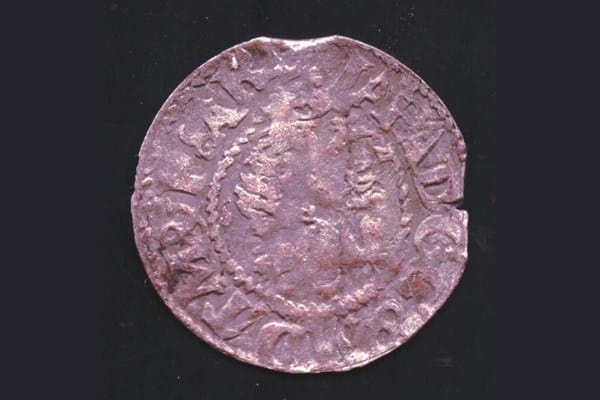
Sevsky Czech. Photo: Archive “RG
Fourth tip
There is no need to buy coins, even very ancient ones, in mediocre condition – they hardly grow in price. Only extremely rare specimens can be purchased in poor quality. Only good things and relatively rare things are suitable for investment. Banalities, “tops”, as numismatists say, have even been falling in price for the last two or three years.
Collections of our childhood
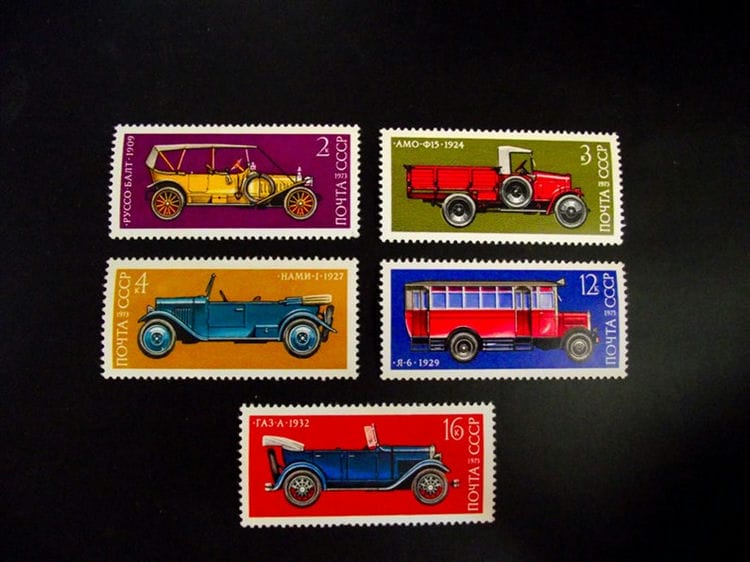
Postcrossing
How about mixing history and geography? Postcrossing is a great idea, it works!
It’s not entirely free, because you have to buy a postcard and pay for the costs of mailing it from your corner of the world to somewhere else. But if you want to collect and share real (paper, non-electronic) postcards with people all over the world – it’s easy and a lot of fun! You can even find new friends.
The smallest in the family will need a little help from adults at first, you need to involve the child, talk about how geographic maps are arranged, and then the child will do everything himself.
Badges
World of Tanks “Projectile” icon. Series: Souvenirs from Hobby World.
Badges can fit into any budget, just set some guidelines before you start collecting them.
Will you collect badges on vacation, from different places you visit? Looking for them in sales and flea markets? As a rule, they are very inexpensive, like postcards, and are very diverse, it is interesting to collect badges. The pins are also sold in parks, exhibitions, festivals and other events.
Today there are icons with your favorite characters (for example, Winx).
McDonald’s Toys, Happy Meal
Happy Meal toys are attractive to children, many of them are also highly collectible. When licensed toys of an interesting new series appear in the chain’s restaurants, not only children who eat meals, but many adults also search and collect toys. Many people buy Happy Meals, throw away food, but take a toy.
Of course, it is difficult to put together such a collection, because fast food is not at all good for your health. But fast food toys are sometimes sold at auctions, including in Russia, so you can collect such a collection without going to McDonald’s.
Free toys
Free – I bet it got your attention. And not without reason. You can get a very interesting collection for free. It’s a collecting and a web craft at the same time – looking for sites with free printables that can be cut and folded to create a standing figure. Just print and collect your favorite tiny heroes.
The most popular lines are Super Mario; Sponge Bob Square Pants; Transformers; Star Wars; Monster High, Ever After High, My little pony, Peppa Pig, and more.
There are many cartoon characters that will make little ones happy, and cutting and assembling these figures takes a little time, and special dexterity is not required. Kids can make them themselves, albeit with a little help at first, but it’s definitely fun and well worth it!
The most amazing collections
Probably, as many things are in the world, so many types of collections can be thought of, but there are the most popular collectibles, among which the most remarkable are: banknotes (coins, paper money, tokens); objects of art; postage (stamps, envelopes, postcards); things related to military affairs; Technics; packaging from something; toys; natural elements (insects, stuffed animals, stones); weapons; footwear; autographs; clothes; jewelry. Naturally, there are many more collectibles, but these categories are the most common.
Most often, collecting costs a person who is fond of decent money, because really valuable things, by definition, cannot be cheap. This can be clearly seen if you look at the largest and most expensive collections in the world with one eye.
The world’s largest collections
Car collection
Probably every man once dreamed of owning a real collection of luxury cars. Today in the world you can find collections of toy cars, vintage cars, racing cars and even trucks. Collectors are passionate about their craft, looking for interesting pieces all over the world.
The world’s largest collection of full-size cars belongs to none other than Hassanal Bolkiah, the Sultan of Brunei. This auto collection has more than 5000 cars, and is regularly updated by its owner with new copies. And the cars here are not anyhow, but for the most part exceptional: rare models of Ferrari, Rolls-Royce, Bentley, Mercedes, Formula 1 winning cars.
Collection of dolls
Each girl had her own small collection of dolls as a child. Time passed, and for some, dolls became only a pleasant memory, setting off to gather dust in boxes in the attic, and someone became so attached to a passion for skillfully executed human figures that they transferred their addiction from the world of childhood to the world of adults, where dolls are no longer play, and create collections from them, sometimes very, very expensive.
Today you can find huge collections of porcelain dolls, handmade dolls and barbie dolls. It is also interesting that there are a lot of men among collectors of dolls, and who said that dolls are for girls?
The world’s largest collection of Barbie dolls consists of fifteen thousand dolls and belongs to a German woman named Bettine Dorfmann. It took her about 20 years to assemble such an impressive collection.
Lego collection
Lego constructors are quite popular children’s entertainment. Perhaps once you had the displeasure of stepping on one of the elements of the construction set scattered by children throughout the apartment, and at the same time experience not too warm feelings. Lego is very addicting, but for some people it’s not just a toy, but a real collectible.
The owner of the largest Lego collection is the Norwegian Jon Jessesen. His collection includes over 750,000 Lego pieces. Moreover, this collection is thematic, and is completely devoted to the film “Star Wars”.
The most unusual collections
There are also not too large, but very unusual collections, including a collection of Yo-Yo toys, soft pandas, and cigarette packs.
Some time ago in our country there was a peak in the popularity of Yo-Yo toys, which then very quickly declined. But for some, collecting these toys has become a real business of a lifetime.
Of course, pandas are pretty cute creatures, but not if you have about a thousand soft pandas in your house, which your husband enthusiastically collects.
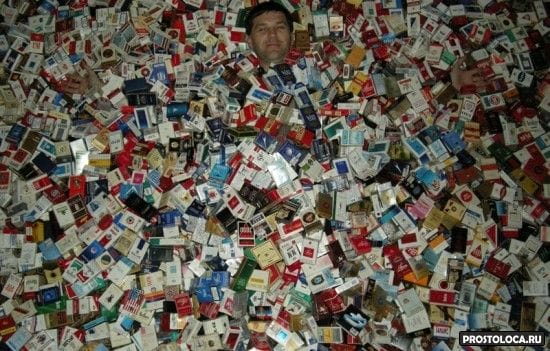 Today, there are at least two dozen major cigarette pack collectors in the world. In 2013, a native of Dnipro distinguished himself, whose collection includes about 30 thousand cigarette packs!
Today, there are at least two dozen major cigarette pack collectors in the world. In 2013, a native of Dnipro distinguished himself, whose collection includes about 30 thousand cigarette packs!
It was an article about what people collect, if you like it – like it! Thanks for attention!
Categories: About everything
Next post
Previous post
Erling Kagge is known for
Erling Kagge, born in 1963, is an almost legendary person. “A charming person. He is a philosophical adventurer or an adventurous philosopher, “wrote The New York Times about the Norwegian. In 1990, Kagge and his partner Berge Ousland became the first people to reach the North Pole unaided. In 1992-1993, Kagge conducted an expedition, during which he reached the South Pole without support. During the entire enterprise, the Norwegian did not even have radio contact with the ground. In 1994, the explorer climbed Everest, becoming the first person in history to conquer the “three poles”.
After completing these travels, Kagge entered Harvard, where he took a course in philosophy. Then the Norwegian went into business and organized the publishing house Kagge Forlag, which became one of the leaders of the local book market. Kagge is also known as a collector of contemporary art and Russian icons. In 2015, he published the book How to Buy Great Art. A Poor Collector’s Guide. ” “I wanted to write good, informative, funny and personal collectibles … I chose this name because it’s funny, relevant and catchy. Of course, I’m not poor in the conventional sense of the word, but I have much less money than those who collect the same artists as me. Thus, in order to be able to buy the best works of artists that seemed to me the most interesting, I had to take a slightly different approach.
Ten Principles of a Poor Collector
In his book, Erling Kagge gives over twenty tips to collectors. Here are the most important ones.
You need an obsession
According to the Norwegian, in order to squeeze the maximum benefit from a limited budget, you need to have a desire bordering on obsession to search, explore and, finally, take possession of the desired works of art. Kagge cites the example of the famous dealer Lord Joseph Duven, who, seeing one of the landscapes of the English romantic William Turner, exclaimed: “If I owned this picture, I would not need anything in the world.” According to Kagge, every new purchase should be approached with such enthusiasm.
Recognize that you are in a market without rules
Kagge recommends immediately accepting the fact that the art market is very opaque and, due to weak regulation, there are no rules on it – there are only deals. The art market is rife with insider trading, price speculation, and cartel formation – and this must be taken into account right away.
Bring your senses to perfection
To distinguish good art from bad, you need to constantly train not only your eyes, but also your ears. According to Kagge, you need to listen to what the people around you are saying. The Norwegian says that renowned art dealer Irwin Blum bought paintings by artists after hearing about them from two or more people he respected.
Connect with people of art
Kagge recommends building personal relationships with those who drive the art market forward. According to him, the surest way to get inside information and knowledge about contemporary art is to make friends with artists, gallery owners, dealers, curators and other collectors.
Remember: gallery owners hold a ball
The Norwegian collector notes that galleries play a key role in promoting art among his buyers. He advises to know personally several gallery owners who sell the artists you want to see in your collection. Regular purchases at multiple galleries will give you a number of benefits: in return for your loyalty, you can get discounts or have access to the best works of art.
Where does collecting begin?
Simon Tovey, Head of Trading at New Now London, Phillips
Many major collectors say that they started their collections by buying copyrighted series of famous artists – with works that are easily recognizable, but at the same time affordable. When collecting art, including contemporary art, you should trust your taste and your passion, catch trends, and think about investing as a second priority. But do not forget about several important points that you should always pay attention to: provenance, quality of work and what place the work occupies in the artist’s work.
Samuel Mansour, New Now Head of Trading in New York, Phillips
There are collectors who focus on certain media in their collections, but the aspiring collector should be interested in all types of art. After all, now there are countless options for what you might like. To develop your taste and find out what you like, galleries, pre-auction exhibitions, museums, contemporary art fairs and even the homes of other collectors are a must-see. You might be surprised what gets your attention in the end! There can be disappointments on the way of the collector – move step by step, you have a lot of time ahead!
ALICJA KWADE. Unexplained condition ($ 5000−7000)
THOMAS RUFF. Nudes cp17 ($ 12 000 — 18 000)
Is it worth buying young artists
Samuel Mansour, New Now Head of Trading in New York, Phillips
My advice is to listen carefully to yourself and choose what really inspires you, rather than looking only for the newest and trendiest artists. Contemporary art trends can be fickle and fickle, and often the most complete, important and interesting collections are formed based on personal passion, direction and a trained eye. Also, there are always galleries, curators and collectors who keep their finger on the pulse – follow their actions and be interested in what they are interested in.
Simon Tovey, Head of Trading at New Now London, Phillips
This is exactly what makes our New Now auctions so compelling and different from the rest: Sam and I strive to offer a wide variety of works not only from established artists, but also from young artists who can attract collectors of all levels, tastes and preferences. Phillips has an incredible connection to the contemporary art world that allows us to find the best work for our trades. Not to mention the fact that we keep a close eye on gallery exhibitions, museum retrospectives, etc. I would cite as examples the young women artists Shara Hughes and Celeste Dupay-Spencer who caught the attention of critics when they were featured in Whitney Biennial this year., and have now received solid market support when we included them in our New Now trades. Phillips was one of the first to auction artists such as Jonas Wood,
VLADIMIR DUBOSSARSKY AND ALEXANDRE VINOGRADOV. Smoke on the Snow ($ 12 000 — 18 000)
TRACEY EMIN. The Kiss Was Beautiful ($ 70 000 — 100 000)
How to behave at the auction if you are there for the first time
People who have never bid or dealt with auction houses may be intimidated by the idea of buying something at auctions, but we are a huge source of opportunities for collectors. The auction house is a democratic and absolutely transparent tool for understanding the value and cost of work. Talk to experts, ask us questions, do not hesitate. We will be happy to share our knowledge, because the love of art is what we have in common. We have an excellent international team of specialists who will come to your aid at any time.
Our main task is to build trusting relationships with clients, to understand what they like and what they don’t, what their expectations are, what their budget is. This helps our specialists to offer collectors exactly what they might be interested in.
ANDY WARHOL. Keith Haring ($ 12 000 — 18 000)
NIKOLAY KOSHELEV. Antwerp 7:07 am (The Moon Pool Project). ($ 25 000 — 35 000)
Where to study for a novice collector
The best way is to immediately plunge into the world of contemporary art and follow what is happening around, learn as you go. I would advise you to read critics’ reviews of exhibitions, follow important curators, collectors and especially artists on social networks – all this will allow you to get the maximum amount of information. And the most important thing is to visit exhibitions and watch for yourself, because, in the end, only your own opinion matters!
In my opinion, contemporary art fairs and pre-auction exhibitions are the best places to see the greatest works and a wide variety of artists in one place. Where else, except perhaps at the Biennale, can you see artists from Tehran to Tinseltown ?! You never know what or who will catch your attention today!
ALEXEY MOROSOV. Caryatid_Supersonic ($ 35 000 — 45 000)
Stones and shells
After a walk, any boy will have a couple of interesting stones in his pockets. And to bring smooth pebbles and shells of a bizarre shape from a sea vacation is an absolutely obligatory item on the summer program. Storing stones is convenient in boxes, egg containers and drawers with dividers. And they are also easy to use in children’s crafts – to create decorative panels and mosaics from them.
Christmas balls
The collection will delight the whole family during the New Year holidays, and each ball will keep in itself the memories of where and when it was purchased. To avoid frustration, invite your child to choose shatterproof balls, especially if they will not only decorate the Christmas tree, but will also participate in games.
Stamps
Such a collection can start with any interesting postage stamp you find in your inbox. It is easy for friends and relatives to participate in replenishing the collection, it is enough to ask them not to throw stamps from envelopes. And in the future, the hobby can be supported by purchasing stamps in philatelic shops, post offices and via the Internet, putting the copies you like into a beautiful album.
Coins
You can start with modern coins from your wallet, asking your child to collect coins of the same denomination, issued in different years. And if the interest does not fade away, you can connect traveling acquaintances to the hobby: the child will like to receive coins from different countries for the collection. Knowing about the children’s hobby, one of the older relatives can remember about the old coins they have preserved, give them to the child and tell about the time when such money was circulating. It is convenient to use a good magnifying glass to examine the peculiarities of minting coins.
Books
The hero of Elena Rakitina’s children’s story “If I Had My Own Planet”, dreaming of my own planet, says that children’s books would never be thrown away on it or given to other homes: “And that I haven’t read them anymore is nothing, I loved them! ” A collection of children’s literature can be inherited and be even more valuable because the year of its publication is several generations older than young readers. You can collect all the works of your favorite writer or gradually acquire the entire series of interesting encyclopedias. Collecting bookmarks can become an accompanying interest.
Postcards
One of the most popular hobbies in the world can become your child’s hobby. A postcard is an inexpensive souvenir from any trip. Let the children decide for themselves what type of postcards they want to collect: city views, New Year’s stories, or just those that depict their favorite animals, for example, tigers. Or maybe they will like the idea of postcrossing – an international exchange of postcards, because this significantly expands the horizon of opportunities for replenishing the collection.
Who is suitable for and where to start collecting
The hobby of collecting is suitable for calm women who like to look at something for a long time, shift from one place to another and organize. This hobby does not have to be expensive – inexpensive and even junk items can be made into luxury collections.
Most often, the desire to collect comes spontaneously – someone accidentally becomes infected with this, seeing the collection at a party or in a magazine, and someone just falls in love with a new craft or creativity and wants to see a piece of it at home. Collecting is perfect for anyone looking for a new hobby, because the collection can be quite small if suddenly the interest in it disappears.
First of all, decide what you would like to see in your collection. Consider your hobbies and the cost and size of the items. Some interesting things require large areas. It is foolish to collect a dozen sewing machines or antique chairs in a one-room apartment.
Please note that for some specimens, certain temperature, light and humidity conditions must be observed. There are interesting ideas, but they are not suitable for home storage because they give off an unpleasant odor or release harmful chemicals.
Among the benefits of collecting hobby are:
- versatility of a hobby – it does not require special talents;
- no need to exert effort and physical exertion;
- broadening horizons and raising the cultural level;
- increasing the circle of communication, meeting new people for the purpose of exchange;
- does not take much time;
- does not violate the cleanliness of the apartment and does not need to organize a workplace.
Most popular collection items
Collecting coins – numismatics – can be put in the first place in this hobby. Coins are collected for some reason. It can be old money, commemorative rubles, coins issued for any events, banknotes depicting cities or famous people.
As a rule, such collections begin with a beautiful ruble received by chance. Later, numismatists buy collectible money at a value many times higher than the face value, exchange with each other, put their rubles up for auction. If you suddenly get tired of collecting coins, the collection can always be sold at a profit.
Collecting postage stamps from different times and countries is no less popular. In the last century, this hobby was as popular as a tablet or laptop is now. For storing and organizing stamps, special folders are produced – stockbooks.
Collecting porcelain figurines is a lovely hobby for women of all ages. Someone collects figures, united by theme, for example, only cats, children or dogs, and someone chooses objects by size or other characteristics. A separate direction here is porcelain dolls.
Women often collect interior items and household items of the chosen era, dishes of a certain direction, for example, crystal, Gzhel or silver, jewelry, boxes, candlesticks. In the collections of needlewomen you can find a complete collection of thimbles, crochet hooks, needles, all kinds of hoops.
At the peak of popularity among modern people are fridge magnets. Just don’t hang around the door with them, collections united by one theme – cities, countries, architectural monuments – look much more interesting.
Budget Collecting Ideas
The novice collector is better off taking his first steps with inexpensive items that are suitable for use as decor. Here are some collectible ideas for women:
- beautiful curly candles;
- Handmade soap
- hairpins;
- semiprecious stones;
- figures from kinder surprises;
- key rings;
- small stuffed toys;
- photographs of one species of animals or plants;
- tea or coffee spoons;
- pens;
- artificial fruits and berries;
- postcards, pocket calendars.
If you don’t want to spend money on buying items, collect plastic cards from various stores, business cards, flyers with movie announcements, perfume and lipstick bottles, beautiful corks, interesting packaging, lucky tickets. It’s not a bad idea to collect photo frames to make a trendy wall decor.
What to collect for a needlewoman
If you have a favorite handicraft, try to connect your new hobby with an existing hobby. If you are sewing, create a collection of patches, leaving a small piece of fabric each time. Make it all beautifully in an album, make signatures. Later, the album will become a chronicle of your sewing creativity.
What can a knitting girl collect? Make a unique collection of various knitting patterns, also arrange everything in a beautiful album with signatures, you can in the style of scrapbooking. Working on order, it will be possible to demonstrate your samples to potential clients.
Nice buttons are another affordable idea to start a new collection with. It is convenient to organize buttons in albums by sewing them in a certain order. When the passion for collecting has passed, they will make wonderful crafts.
Now it is very fashionable to collect handicrafts: Tildas, knitted toys, polymer clay dolls, beaded figurines. You can collect not only your masterpieces, but also the results of the creativity of other needlewomen.
Collecting gifts of nature
If you cannot indifferently pass by the gifts of nature, make them the subject of your collections. It can be cones, beautiful stones, seashells, unusual driftwood. Herbariums of dried flowers and leaves look spectacular, but to create them you will have to work a little.
Collecting cacti is another useful hobby for a woman. Desert dwellers do not require much attention and do not take up much space if you choose miniature specimens. An equally spectacular collection is obtained from violets.
See collecting as a hobby, but do not become a slave to collecting – everything is a good measure! On our site you will find a list of all women’s hobbies, in which, perhaps, new discoveries await you. Visit us more often and subscribe to news on social networks, we are always glad to enthusiastic guests.
Philately
A philatelist is a person who is very fond of collecting stamps. Philately appeared in 1840. In the same year, the first batches of postage stamps were published.
Philately began to enjoy popularity in Russia since 1845, when envelopes were created, and with the appearance of the first Russian stamps in 1858, it began to gain great popularity. On the envelopes of correspondence from the East, six penny stamps, which were then worth about a hundred German marks, were glued. On another envelope of the Moscow post office, they glued five kopecks, which were then worth about a thousand marks.
Sources used and useful links on the topic: https://www.Monetnik.ru/obuchenie/numizmatika/kak-stat-numizmatom/ https://rg.ru/2014/05/10/numizmatika-site.html https: / /fishki.net/1589051-chto-kollekcionirovali-my-a-chto-teper-sobirajut-nashi-deti.html https://www.toybytoy.com/collection/What-can-collect-the-child https: / /prostoloca.ru/chto-kollekcioniruyut-lyudi https://g1.gallery/ru/feed/articles/2017/08/15/how-to-collect-great-art-on-a-tight-budget-434/ https://bazaar.ru/bazaar-art/iskusstvo/kak-nachat-kollekcionirovat-iskusstvo/ https://letidor.ru/otdyh/15-idey-dlya-malenkih-kollekcionerov.htm https: // zhenskie-uvlecheniya .ru / kollekcionirovanie-xobbi-dlya-zanyatyx-i-akkuratnyx-zhenshhin.html https://lavnik.net/uvlecheniya-i-hobbi-kollekcionirovanie

